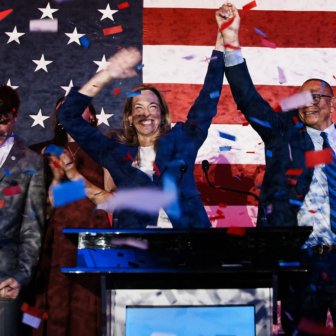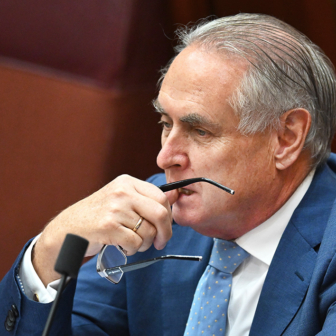“The mathematicians HAVE IT! The mathematicians HAVE IT!” You know election fever is getting to you when the rococo figure of John Bercow invades your dreams to announce the result of the United Kingdom’s vote on 7 May from his high speaker’s chair in the House of Commons. And most unsettling it is to hear those bellowing tones in your reverie, rather than, to take an example at random, Sophie Marceau inviting you for a coffee. But the voice of the unconscious is on to something. For if the result is still, agonisingly, anyone’s guess, 2015 will doubtless be known as the “data election” – take that, social media! – and the scrutineers of human souls as its unalloyed stars.
It’s not just the sheer profusion and sophistication of tools to record and analyse voter sentiment at every level (UK-wide, sub-national, regional, constituency, demographic) and on every issue (party and leader preferences, policy awareness and attitudes, favourite and least-wanted scenarios). Nor is it the unprecedented range of delivery systems. (The polling companies include YouGov, ComRes, ICM and Populus; refuelling stops like UK Polling Report, UK Political Betting, and May 2015; academic spin-offs like Election Forecast, Electoral Calculus, and Elections Etc; dedicated and well resourced teams on the main papers; a flurry of narrowcast start-ups such as YourNextMP and Parliamentary Candidates UK; the expensive one-off of Lord Ashcroft Polls.) Nor is it the “big data campaigning” at the heart of party efforts, where various behemoth systems – Merlin, Nationbuilder, Voter Activation Network – battle for digital supremacy.
Nor is it only the sight of so many impressive operators dominating the airwaves 24/7, armed with a practised ability (as George Orwell put it in another context) to “give an appearance of solidity to pure wind.” Or even the way that these genial purveyors – “Roll up, roll up! Lovely fresh stats! Here, madam, look at these scales!” – manage to establish a market oligopoly with near-identical and invariant produce.
No, it’s also the fact that behind all this, trends in technology, politics, ideas and fashion have given the social balance of power a hefty nudge in their direction. Everyone already lives in data’s web and is in data’s thrall. Even more than that, we ourselves are data as well as the citizens we once were and the consumers we long ago became. Election campaigns, too, are now a showcase of digital peak performance. (To the extent that even data’s inconclusiveness leads the news. “The four utterly contradictory polls that tell the story of this election – and why it is pointless trying to predict the outcome” was the Independent’s top online story on 28 April.) As with Twitter, the fact that it’s data is enough to make it a story. The old stagers – leaders, candidates, party strategists, journalists, voters, those sorts of people – are still allowed their turn. But the data analysts are where the action is.
A measure of their hegemony is that the campaign rhythms and moods of the political-media class are governed by the latest headline figures and accompanying reams of microscopic tables. If it’s Monday it must be ICM, Thursday and it must be ComRes. The inner clock is programmed, the pressure on shredded nerves relentless. Each day too counts down to 10 pm and the nightly YouGov poll. That sadistic timing – how to cope so late with a 2 per cent decline in the Labour lead among twenty-five to thirty-four year olds in the West Midlands? – ensures a restless sleep that calls forth monsters. And then, awoken by booming Bercow or the equivalent, it all starts again. This election – to adapt the Hungarian mathematician Alfréd Rényi – is a device for turning coffee into algorithms.
Elections, of course, are always about numbers. But their hegemony in this one extends to more than usually fevered speculation about the final calculus. The combination of a tight race for first place, multiparty contention, and the randomness of the first-past-the-post system makes for exceptional uncertainty. Both Conservative and Labour parties are scoring in the low-to-middle thirties in the polls, and with 302 and 256 seats respectively, neither is likely on its own to win the 323 needed to form a majority. That means finding a coalition partner. The Liberal Democrats remain the favourite for that role, but after five corrosive years in government with the Conservatives they may retain only half of their fifty-seven seats, insufficient to renew the existing pact. The Lib Dems are also almost certain to surrender their “third party” status at Westminster to the Scottish National Party, or SNP, whose sweeping post-referendum ascent promises a haul big enough for the pro-independence party to make its preference, a Labour-led government, viable.
Con–Lib Dem and Labour–SNP, then, seem in principle to be the main options in forming the next government’s ballast. In both cases, however, bad blood and the lesser parties’ self-interest could make a formal coalition less likely than a looser “confidence and supply” arrangement that facilitates key business and protects both sides’ amour-propre. Moreover, either pairing could well need further support from parties with a handful of MPs (Northern Ireland unionists, Welsh nationalists, or Greens). And every stage in the formation of a new government would be complicated, thanks to party rivalries, internal divisions over collaboration with erstwhile enemies, tough negotiations over policy, and the fallout of the election result itself. Everything depends on the fine-grained arithmetic that emerges sometime on 8 May (Northern Ireland’s results, invariably the last to declare, might be crucial to the formation of a new government).
The campaign is being fought with fusillades of statistics, now subject to the quality control of a new breed of fact-checkers (once known as journalists). The chirpiest people during this campaign are Ruth Alexander and the Financial Times’s Tim Harford, presenters of BBC radio’s More or Less, who daily test the parties’ claims against the evidence. Channel 4’s Fact Check initiative and the more comprehensive Full Fact (which examines the media too) are also thriving. Two lodestars of economic rectitude, the Institute for Fiscal Studies and the Office for Budget Responsibility, act as a court of final appeal, with the IFS’s Paul Johnson – professional enthusiasm just holding at bay existential despair over the nation’s balance sheets – enjoying a trust surplus over discredited politicians.
The centrality of economic data in the election debate makes such monitoring roles vital. Both main parties selectively pillage the Office for National Statistics – the third in a holy trinity of independent institutions – for maximum partisan effect. The Conservatives boast of record high employment, near zero inflation, rising GDP (though a surprise quarterly fall to 0.3 per cent is a late blow) and progress in deficit reduction. Labour highlights low pay and job insecurity, inequality, housing shortages and high rents, and tax avoidance by the super-rich. The rain of figures is relentless, the capacity of each side to persuade moderated by the danger of leaving voters punch drunk.
A ferocious dispute over the Conservative-led coalition’s economic record since 2010 – pitiless austerity vs necessary thrift are the coordinates – has long framed the political argument. Does Britain need buccaneering centre-right continuity under prime minister David Cameron or an abrupt shift to the regulatory centre-left model conjured by Labour leader Ed Miliband? Here, the campaign saw a strange reversal, with the Tories adopting free-spending apparel (including an extra £8 billion, or A$16 billion, for the health service) and Labour wearing a “budget responsibility lock.”
Weeks of trench warfare have ensued, punctuated by gimmicky flares over tax and housing. The Tories in particular are, under their strategist Lynton Crosby, busy reattaching barnacles onto their boat; offering social housing tenants a “right to buy” and proposing a law to forbid key tax rises in the next parliament are but two. Every policy – benefit caps, stamp duty, tax breaks, pension reliefs, mansion tax, bedroom tax, bank levies – has the manner of a data-driven exercise, a calculated stunt in search of the stray voter.
As Philip Collins, former speechwriter to Tony Blair and now an astute Times columnist, writes on 1 May:
Politics, which was once an ally of history and philosophy, has in this election been reduced to mathematics. Every event has been seen either as one that moved the polls or failed to do so. The campaign has drowned in data. It has been analysis by numbers; rampant inflation in information but not necessarily in insight.
The Scottish dimension – or the prospect “that Scotland will decide who governs Britain,” as David Marr, covering the election for the Guardian, puts it – introduces another branch of maths into the equation. The Scots, already in confident possession of their own parliamentary redoubt in Edinburgh, said “no” to full independence in September, but are now preparing to elect a large cohort of nationalist MPs who will, in the words of SNP leader Nicola Sturgeon, “make Scotland’s voice heard at Westminster.” That scenario, hitched to the likelihood of the SNP being pivotal in the new parliament, is making the London-based parties shudder. How to cope with a party dedicated to the United Kingdom’s break-up wielding such power? But how can its legitimacy, as delivered by the election outcome and guaranteed by constitutional propriety, be denied?
Scotland’s convulsion, however, is also the most dramatic example of the way Britain’s political geography – always a mosaic of local, regional, national, class and urban-rural elements – is becoming even more differentiated. The result? Call it “variable geometry” – a concept used in aerodynamics to reconfigure an aircraft’s in-flight wing shape, and raided by political scientists in the post-1989 era to capture the European Union’s growing complexity. It never took off in Britain, but the time for some such mathematical legerdemain has come. The difference is that the polycentric European Union is reconciled to its unevenness and relativism, whereas the sovereign United Kingdom – always multinational, ever asymmetric – is not, in ways that make the current settlement increasingly dysfunctional. The saving ditch, if there is one, looks to be a federal polity based on a new financial settlement.
There are precedents for the finances. The “Goschen formula” was conceived in 1888 – a period of “home rule” agitation in Ireland and, to a lesser extent, Scotland – by George Goschen, chancellor in the Conservative government, to allocate public funds across the United Kingdom according to population. (The proportions were 80:11:9 to England and Wales, Scotland, and Ireland.) Ninety years later, the “Barnett formula” was improvised by Joel Barnett, treasury minister in the Labour government, who was facing tough spending constraints while planning a Scottish assembly to propitiate demands for a measure of self-government.
Barnett’s mechanism entailed automatic adjustments to public spending in Scotland, Northern Ireland and Wales in territorially relevant areas, calculated from an English baseline. A distant cousin of Australia’s Grants Commission formula, this short-term expedient – long detached from population changes and needs assessment, long insulated from reform by political sensitivities, and long disowned by its author up until his death last year – staggers on through its fourth decade. In 2012–13, the funds spent in England, Wales, Scotland, and Northern Ireland were (relative to the UK average) 97 per cent, 110 per cent, 116 per cent, and 124 per cent. Pocket-book, sticking-plaster unionism turned into quasi-constitutional principle, a monument to anachronism. Yet can Britain work any other way?
Any fresh political–financial deal will have mathematics at the heart. It can happen only if English and Scots together, as well as others, want it. The shared capital to make it possible is waning. But keeping the show on the road is what the United Kingdom has long been about. After 7 May, the old country will awake to a new stage in that reality. •




